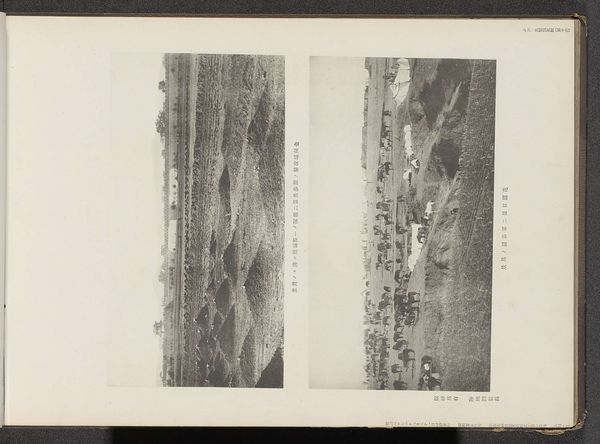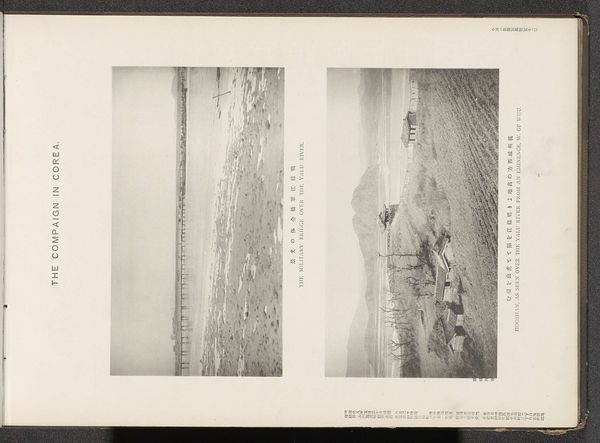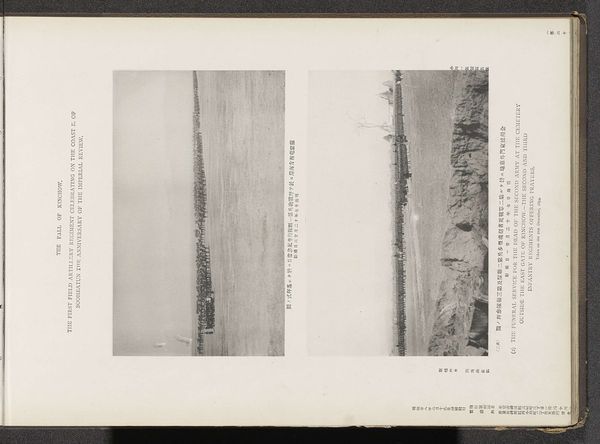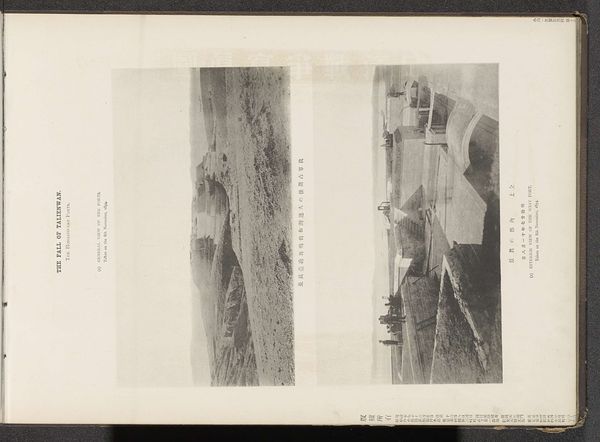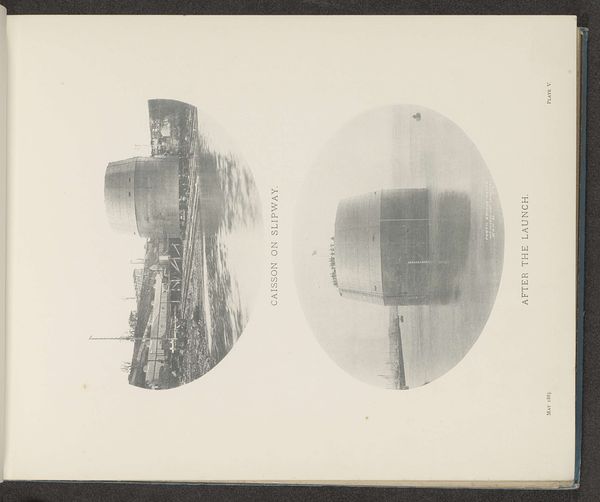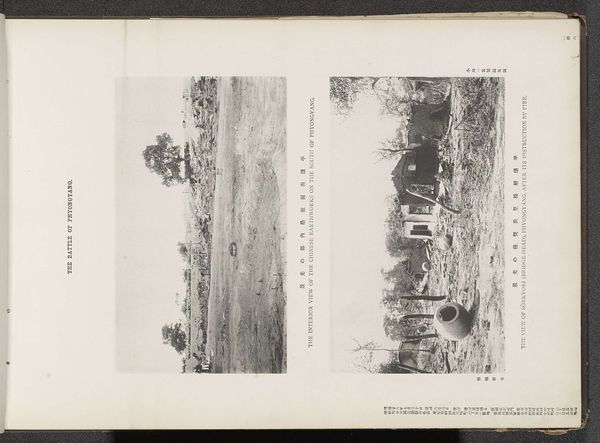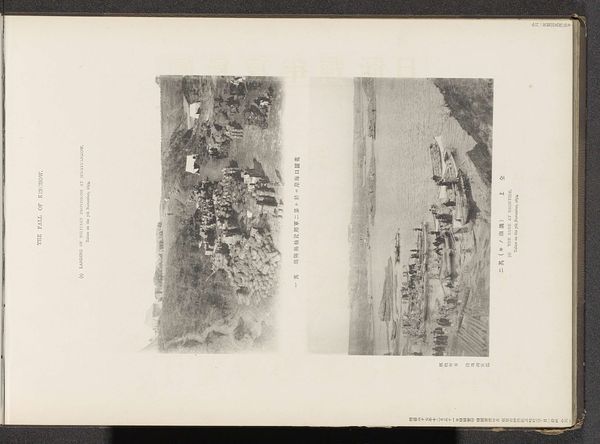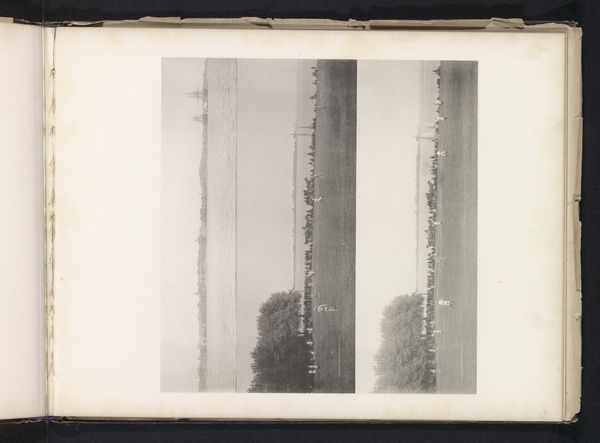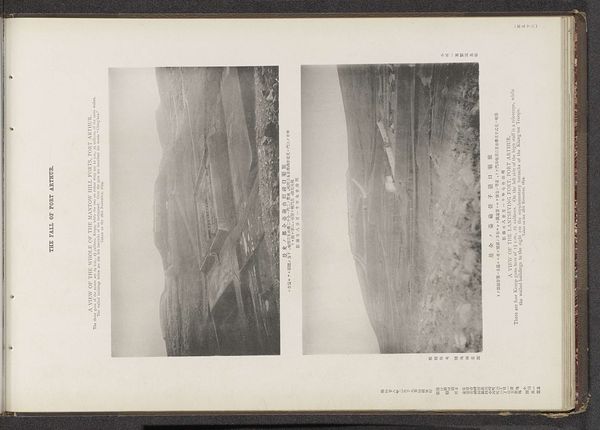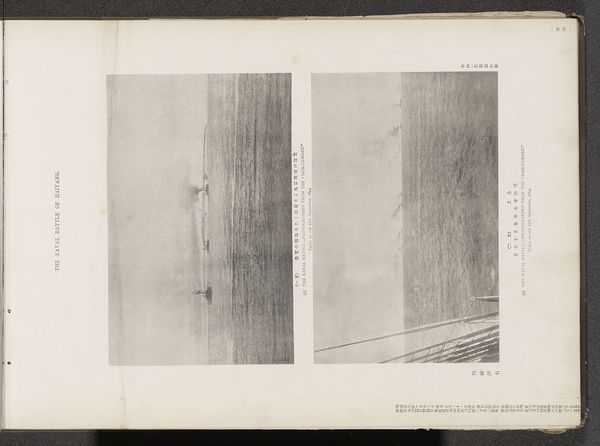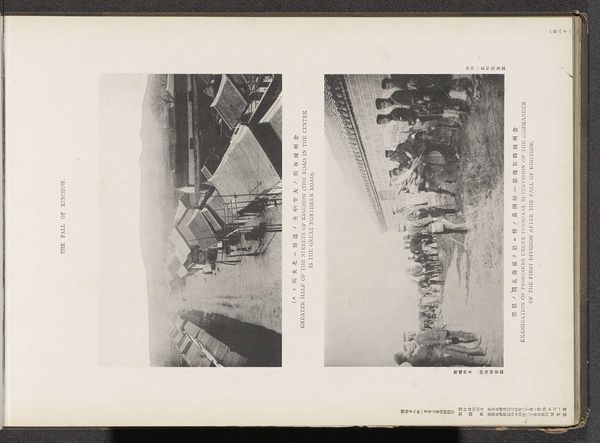
Twee gezichten op een begrafenisceremonie voor de slachtoffers van het Japanse leger op de begraafplaats te Chinchow Possibly 1894
0:00
0:00
print, photography
# print
#
landscape
#
photography
Dimensions: height 426 mm, width 195 mm
Copyright: Rijks Museum: Open Domain
Editor: This photographic print from possibly 1894, titled "Twee gezichten op een begrafenisceremonie voor de slachtoffers van het Japanse leger op de begraafplaats te Chinchow," captures what seems like a solemn moment. I'm immediately struck by the somber mood, amplified by the monochromatic palette and the rows of figures. What do you see in this piece? Curator: The starkness is compelling, isn’t it? This image offers us a potent entry point into examining the complexities of conflict and remembrance, specifically regarding the First Sino-Japanese War. This image of a funeral procession makes me think of whose narratives are prioritized. Are the victims given voice? How might cultural biases in photography have played a role in shaping our understanding of this event? Editor: That’s a perspective I hadn't fully considered. It's almost like the image itself is a site of potential historical tension, where multiple, possibly conflicting, interpretations could exist. Curator: Exactly. The photograph prompts us to reflect on representation and the gaze. Who controlled the narrative? How are loss and grief presented? It's about deconstructing the visual language of power embedded within seemingly simple documentation. Consider, for example, how this image may have been used to garner public support. Editor: So, by analyzing the context and questioning the photographer’s perspective, we gain a more nuanced understanding, even beyond the literal depiction of a funeral? Curator: Precisely. By engaging critically with such imagery, we acknowledge the role art plays in shaping historical understanding and can move toward a more intersectional narrative. Editor: That really changes how I look at historical photographs now. Thanks, that was enlightening! Curator: Indeed. Art holds a mirror up to society, prompting us to confront uncomfortable truths and reimagine our collective past.
Comments
No comments
Be the first to comment and join the conversation on the ultimate creative platform.

